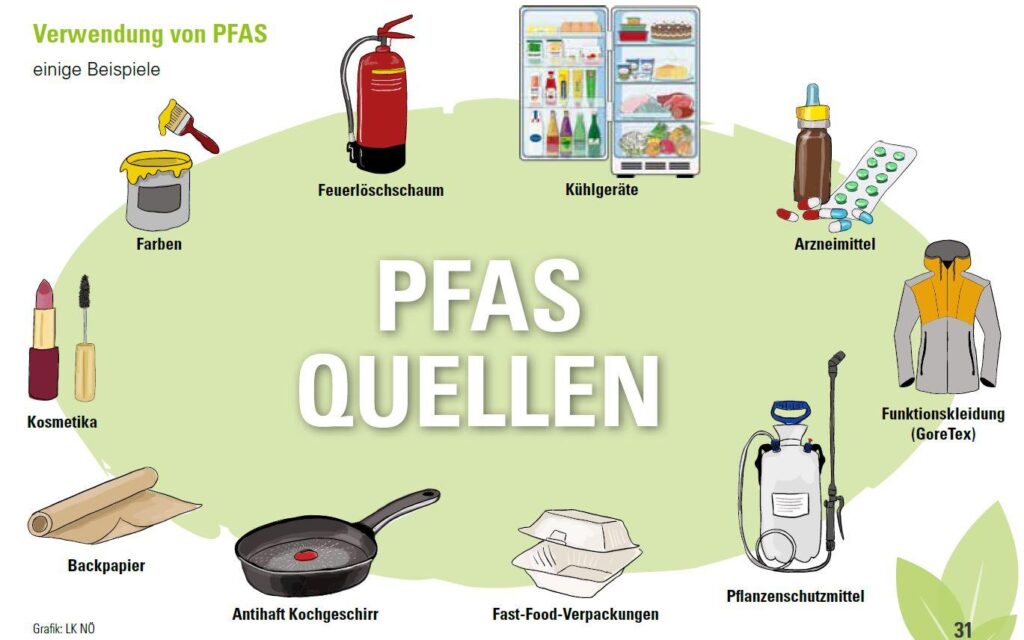Concerns over water safety have resurfaced in East Selah as the Washington State Department of Ecology confirms the presence of per- and polyfluoroalkyl substances (PFAS) in the community’s drinking water supply. PFAS, often dubbed “forever chemicals” for their persistence in the environment, have been linked to a range of health risks, prompting increased scrutiny nationwide. This latest disclosure underscores ongoing challenges faced by local authorities in ensuring clean, safe water for residents, and raises questions about the sources of contamination and the steps being taken to address the potential threat.
PFAS Detection in East Selah Drinking Water Raises Public Health Concerns
The recent analysis carried out by the Washington State Department of Ecology has confirmed the presence of per- and polyfluoroalkyl substances (PFAS) in the municipal water supply of East Selah. PFAS, often referred to as “forever chemicals,” are synthetic compounds linked to adverse health effects, including hormonal disruptions and increased cancer risk. The detected levels, though below federal emergency thresholds, exceed the Environmental Protection Agency’s recommended guidelines, prompting immediate community attention and calls for enhanced monitoring.
In response, local authorities have outlined a series of precautionary measures aimed at safeguarding public health. These include:
- Increased frequency of water quality testing to track PFAS concentration trends
- Public advisories urging residents, especially vulnerable groups, to minimize direct consumption of tap water
- Investments in advanced filtration technologies capable of reducing PFAS levels in the water system
- Community forums to discuss risks, remediation efforts, and support resources
| PFAS Compound | Detected Level (ppt) | EPA Health Advisory Level (ppt) |
|---|---|---|
| PFOA | 12 | 4 |
| PFOS | 15 | 4 |
| PFHxS | 7 | 20 |
State Ecology Department Details Contamination Sources and Risk Levels
The Washington State Department of Ecology has identified multiple contamination sources contributing to elevated PFAS levels in East Selah’s drinking water. These sources primarily include nearby industrial facilities, fire training areas, and landfills where PFAS-containing materials have historically been used or disposed of. The department emphasizes that legacy contamination, combined with ongoing discharge from current operations, continues to pose a challenge for local water safety.
Key contamination sources outlined:
- Manufacturing plants using PFAS in production processes
- Firefighter training sites with aqueous film-forming foam (AFFF) usage
- Waste disposal sites containing PFAS-laden materials
In assessing risk levels, Ecology categorizes the impact on water quality into three tiers-low, moderate, and high-based on PFAS concentration and potential exposure. The following table summarizes the risk classification relevant to the East Selah water supply:
| Risk Level | PFAS Concentration (ppt) | Health Concern |
|---|---|---|
| Low | Below 10 | Minimal risk |
| Moderate | 10-70 | Monitor regularly |
| High | Above 70 | Immediate action recommended |
Urgent Recommendations Issued for Water Treatment Upgrades and Community Safety Measures
The Washington State Department of Ecology has issued critical guidance aimed at mitigating the risks associated with elevated levels of PFAS detected in the East Selah drinking water supply. Immediate upgrades to existing water treatment systems are recommended to enhance removal efficiency of these persistent contaminants. Key measures include the integration of advanced filtration technologies such as activated carbon and ion exchange resins, both proven methods to reduce PFAS concentrations effectively. Community water authorities are urged to prioritize these interventions to safeguard public health and maintain compliance with forthcoming regulatory standards.
Alongside technical upgrades, the Department emphasizes the implementation of robust community safety initiatives. These include:
- Regular water quality monitoring with publicly accessible reports
- Community education programs to raise awareness about PFAS exposure risks
- Establishment of emergency response protocols in case of contamination spikes
- Collaboration with local health agencies to track and respond to potential health impacts
| Recommended Upgrade | Estimated Effectiveness | Implementation Timeline |
|---|---|---|
| Activated Carbon Filtration | 70-90% PFAS removal | 6-12 months |
| Ion Exchange Resins | Up to 95% PFAS removal | 9-18 months |
| Advanced Oxidation Processes | Variable – best used in combination | 12-24 months |
The Way Forward
As concerns about PFAS contamination persist nationwide, the findings from East Selah’s drinking water underscore the ongoing challenge of ensuring safe and clean water for all communities. The Washington State Department of Ecology continues to monitor the situation closely, working alongside local authorities to identify sources and implement remediation efforts. Residents are encouraged to stay informed through official channels as investigations proceed and solutions develop. This case highlights the critical need for sustained vigilance and proactive measures in addressing emerging environmental health threats.
